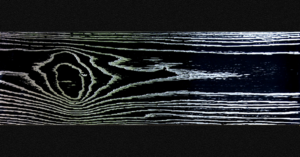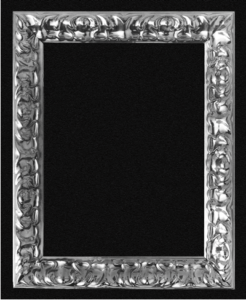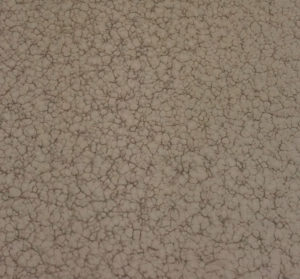NEW PRODUCTS 2020

PAW 500 is a two-component finish coat on water based that is characterized by a matt appearance and a velvet look. It is well appreciated for its self-curing properties of the glossy marks that appear after scraching a matt surface. It is characterized also by a high filling power, a excellent surface hardness and a good chemical resistance.
Application procedure
· The wood must be dust free
· Apply a clear or a coloured primer on water base or on solvent base.
· Apply the matt finish coat PAW 500 on the surface previously sanded.
Is now available a line of products with anti-woodworm activity dedicate to the treatment of the wood suffering from woodworms presence and wood-destroyng fungi. BW 158 is used to cure the wood before the futher coating application while IBW 154. add to the anti-woodworm activity a water-proof protection and a tonalization of the wood. Both BW 158 and IBW 154. are biocidal products in accordance to european regulamentation 528/2012.
APW 92. application guarantees an antibacterial protection lasting in time on the treated support. APW 92 is formulated with silver salts in nanoparticle composition and its action prevents pathogens growing on the supports for the mains bacterial types. This is confirmed by tests performed following the ISO 22196:2011 regulation. The product spreads smoothly on the surface and it’s characterized by a high filling power, an excellent final harness together with a remarkable chemichal resistence.
Antibacterial products are available in transparent version (APW 920.), in colours version (APW 921) or with embossy effect (APW 925.).
- CATAS test prooving the antibacterial activity of APW 92 in according to ISO 22196:2011
DK 30 is a special product that allows to obtain a special design on flat surfaces. The three-dimensional cristals will appear during the drying process. The changing of the primer colour and the chrome paint permits to obtain different design and shades on the surface.
- DK 30 on black base
- DK 30 on metalized green base
Application procedure
· The surface has to be dust free.
· Apply a coloured PU primer ( FL 226. line).
· After 4 hours apply by spray gun with low pressure a coating of DK 30. The product when apply might appears non perfect flat on the surface but this is not affecting the final result. Three-dimesional cristals will appear with the drying of the product.
· At least after 2-4 hours for cristals apply a coating of silver chrome effect (ARG 15).
· After 30 minutes from chrome application remove the exceeding product with a wet soft cloth. After the cleaning the surface must be totally flat. During this cleaning step the color our the primer will be revealed as the border of geometri desing.
· After 1 hour fix the effect with LPI 805 (glossy ) or OA 461.40 (semi-matt finish).
Why should I use a flame retardant process?
The flame retardant process allows to slow the fire diffusion. Authorities consider the flame retardant treatment of wood surfaces as a satisfactory passive prevention against fires.
Italian and European regulations divide all the materials in six different fire reaction classes (from 0 to 5) according to the way they react in case of fire. Easily flammable materials belong to the 5th class while incombustible ones are considered of zero class. Due to its nature wood reaches the 1st class of fire reaction. Using Eureka Colour’s flame retardant process guarantees a first class prevention on wood surfaces.
Regulation and Certification
AFV 400 FLAME RESISTANT is certified flame-retardant surface coating of 1st fire reaction class in accordance to regulation UNI 9796. The fire class determination of the treatment is done by authorized laboratries, using a sample of the examined products. Authorities will then grant permission to use treatment as a flame retardant.
In the following video is possible to view some tests that can be done during the fire-class determination of treated surfaces.
Which documents do I need to certificate the flame retardant treatment?
Varnisher needs to provide the following documents to certificate the fire-retardant treatment:
· Statement of Correct installation, where the varnisher declares that the required procedures have been used.
· Conformity Assessment, provided bu the manufacturer.
· Copy of the Test Certificate, provided by the manufacturer.
· Copy of the Omologation Certificate, provided by the manufacturer.
- Test Certificate of AF 400 IGNIFUGA issued by Italian Home Office certifying the process as flame-retardant (1st fire reaction class)
Application Process
· The wood surface must be clean and dust free. The humidity rate of the surface musn’t be beyond 12%.
· First use 300 g/m² of basecoat AFV 400 and apply two coats of product (150 g/m² for each layer). Wait one hour before applying the second layer.
· After 24 hours from the besecoat application, sand the surface softly with sandpaper 180-200, then apply 100g/m² of AFV 400 TOP topcoat.
· The treated surfaces reach the flame retardant characteristics when it is completely dry.
For more information about each mentioned product visit its personal data sheet.
Why should I use a flame retardant process?
The flame retardant process allows to slow the fire diffusion. Authorities consider the flame retardant treatment of wood surfaces as a satisfactory passive prevention against fires.
Italian and European regulations divide all the materials in six different fire reaction classes (from 0 to 5) according to the way they react in case of fire. Easily flammable materials belong to the 5th class while incombustible ones are considered of zero class. Due to its nature wood reaches the 1st class of fire reaction. Using Eureka Colour’s flame retardant process guarantees a first class prevention on wood surfaces.
Regulation and Certification
AFV 450 COLOR and AF 450 BIANCO are certified flame-retardant surface coating of 1st fire reaction class in accordance to regulation UNI 9796. The fire class determination of the treatment is done by authorized laboratries, using a sample of the examined products. Authorities will then grant permission to use treatment as a flame retardant.
In the following video is possible to view some tests that can be done during the fire-class determination of treated surfaces.
Which documents do you need to certificate the flame retardant treatment?
Varnisher needs to provide the following documents to certificate the fire-retardant treatment:
· Statement of Correct installation, where the varnisher declares that the required procedures have been used.
· Conformity Assessment, provided bu the manufacturer.
· Copy of the Test Certificate, provided by the manufacturer.
· Copy of the Omologation Certificate, provided by the manufacturer.
- Test Certificate of AF 450 COLOR issued by Italian Home Office certifying the process as flame-retardant (1st fire reaction class)
- Copy of the Test Certificate issued by Italian Ministry id the Interior proving the class reaction of flame retardant product named AF 450 BIANCO
Application procedure
· The wood surface must be clean and dust free. The humidity rate of the surface musn’t be beyond 12%.
· First use 300 g/m² of basecoat AFV 400 and apply two coats of product (150 g/m² for each layer). Wait one hour before applying the second layer.
· After 24 hours from the besecoat application, sand the surface softly with sandpaper 180-200, then apply 100g/m² of AFV 400 TOP topcoat.
· The treated surfaces reach the flame retardant characteristics when it is completely dry.
For more information about each mentioned product visit its personal data sheet.
The new ARG process allows to reach an extreme chrome brilliant effect in mouldings, frames and furniture. The products involved in that process can all be applied by spray machine. The entire process is formulated to achieve the best results in easy steps.
ARG process is suitable for several supporting surfaces as frames and mouldings, furniture, parquets and other kind of materials that have been previously treated. In the following images some examples of its applications are represented.
- ARG 10 su fondo nero
- ARG 10 su fondo nero
- ARG 10 su fondo nero
- ARG 10 su fondo nero
- ARG 10 fixed with coloured semi-transparent finish coats
- ARG 10 con patina verde AS 08.600
- ARG 10 con patina noce AS 08.800
- ARG 10 con patina blu AS 08.703
- ARG 10
- ARG 10 – Frame
- ARG 10
- ARG 10
- ARG 10
Standard Process
· Apply one coat of black thixotropic poliurethane-based primer (FL 226.900).
· Apply one or two coats of glossy poliurethane-based finish (LP 791).
· At least after 24 hours from the finish coating, apply the silver film ARG 10 or ARG 15.
· ARG film has to be fixed with a glossy clear polyurethane water-based topcoat (LPW 382).
For more information about the single products mentioned, visit the personal data sheets.
The Rust Effect developed by Eureka Colour srl allows to obtain the cortene appearance in few and easy steps.
The rust range of products (ER 16.) is composed by one-component paints that are applied by spray machine. The liquid paint spreads itself in an inhomogeneous layer creating the rust effect.
- ER 16.Effetto ruggine colorato
- ER 16. Effetto ruggine colorato
- tonalità diponibili di ruggine
- ER 16.800 – Effetto ruggine bruno
- ER 16.400 – Effetto ruggine rosso
Standard process
· The surface has to be dust free.
· Apply the iron-grey PU primer for rust effect ( code number FPR 160).
· Apply tje coloured paint for rust effect with a spray gun with a nozzle size of 1.7. ER 16. spreads itself in an inhomogeneous layer.
The following colours shades are available:
· ER 16.200 – YELLOW RUST PAINT
· ER 16.400 – RED RUST PAINT
· ER 16.800 – BROWN RUST PAINT
· After 1.30 hours from the application of ER 16. the surface can be fixed with a matt coating (OAG 471.05) or a high glossy finish coat ( LPI 805 or LPP 463).
ENK 8 is a two compoment paint that can be applied on top of coloured primer and provides a pearl cloudy effect on the surface, The effect is obtained applying the product by spray machine using a low pressure level.
- ENK 8 – Effetto nuvolato bicomponente su base nera
Procedura di applicazione
· The surface has to be dust free.
· Apply a coloured PU primer ( FL 226. line).
· Apply an homogeneous coating of ENK 8 on the coloured primer and e successivamente afterwards drop the product using a low gun pressure.
· After 8 hours is it possible to fix the final effect with LPI 805.
HE 19. is the product line that allows to easily obtain a hammer effect. Several pearl tones are available
- HE 19.007 – Effetto martellato verde acqua
- HE 19.003 – Effetto martellato sabbia
- HE 19.005 – Effetto martellato grigio
Application process
· The surface has to be dust free.
· Apply a coloured PU primer ( FL 226. line).
· After 4 hours apply the one-component pearl primer of the same tone of the selected hammer paint (produlct line MP 191.)
· After 6 hours apply an homogeneous layer of HE 19. The amount of the applied products affects the holes size of the hammer effect.
· After 6 hours fix the hammer effect with LPI 805.
The product line named OAG 471 has been developed to overcome to the “glossy scraches shortcoming” that usually occours in matt surfaces varnished with acrylic products.
Thanks to its specific formulation, the clear PU acrylic matt finish coat OAG 471.05, has an excellent chemical resistance and surface hardness together with a matt look. Its application is suggested in parquet, doors and furniture varnishing.
The surface hardness and the chemical resistance have been tested to CATAS laboratories.
- Scrivania fissata con OAG 471.05
- OAG 471.05 – Acrilica antigraffio
- Test di prova effettuato presso il CATAS per la determinazione della resistenza agli agenti chimici secondo la norma EN 13442:2013
- Test di prova effettuato presso il CATAS per la determinazione della resistenza all’abrasione secondo la norma UNI EN 14354:2005
Application procedure
· The wood must be dust free.
· Apply an acrylic PU clear primer (FA 156) or a coloured PU primer (FL 226.)
· After 4-6 hours apply the matt clear pu acrylic scratch resistant finish coat (OAG 471.05). Clean properly the spray gun.
PST 531 is a transparent two-component PU finish coat characterized by a velvet appearance and a remarkable soft feeling to the touch. It prevents the glossy mark on its surface also if its appearance is extremely matt. If PST 531 is applied on a transparent base coat it will provide a naturale and matt appearance. If it is applied on top of a black primer it will provide a blackboard effect. It’s application is suitable for furniture that is not too exposed to worn risk or subject to daily cleaning. The porous surface that provide the velvet and soft touch appearance natural could help retaining dirt. CATAS test are available upon request for abrasion resistance (UNI EN 15185:2011), for cold liquid resistance (norma EN 12720:2013) and humid heat resistance ( UNI EN 12721:2013).
- Resistance to cold liquid of PST 531 following UNI EN 12720:2013 regulation
- PST 531_Abrasion resistance of PST 531 in according to UNI EN 15185:2011
Procedura di applicazione
· The surface has to be dust free.
· Apply an acrylic PU clear primer (FA 156) or a coloured PU primer (FL 226.)
· After 4-6 hours apply the matt PU soft touch finish coat named PST 531.


































